This article was medically reviewed by Danielle Jacks, MD and by wikiHow staff writer, Christopher M. Osborne, PhD. Danielle Jacks, MD is a Surgical Resident at Ochsner Clinic Foundation in New Orleans, Louisiana. She has over six years of experience in general surgery. She received her MD from Oregon Health and Science University in 2016.
There are 11 references cited in this article, which can be found at the bottom of the page.
This article has been viewed 11,002 times.
Your risk of developing a blood clot, especially a DVT in your thigh or calf or a pulmonary embolism in your lung, is elevated for about 90 days after any surgical procedure. Fortunately, there are several steps you can take to reduce your risk before the surgery, in the hospital, and while recovering at home. Your most important job is to follow your medical care team’s instructions in areas such as taking prescribed medications, moving around regularly, staying hydrated, and taking action if you notice signs of a potential blood clot.
Steps
Following Post-Op Guidelines in the Hospital
-
1Let your care team know right away if you experience blood clot symptoms. Make sure that you know what to watch out for, and share this information with any family members or other frequent visitors during your hospital stay. It’s vital to address blood clots as soon as possible in order to minimize the risk of serious damage or even death.[1]
- Common symptoms of deep vein thrombosis (DVT) include pain, swelling, and redness, most often in the thigh or calf, or 1 leg being significantly more swollen than the other.
- Signs of a pulmonary embolism (a clot that has migrated to one of your lungs) include breathing troubles, chest pains, coughing (including possibly coughing up blood), and an irregular heartbeat.
- Remain vigilant in watching for these symptoms for at least 90 days after your hospital stay. In fact, seek medical attention no matter how long after your surgery the symptoms occur.
-
2Follow your medication regimen during your hospital recovery. No matter what type of surgery you undergo, you’ll be prescribed several medications during your post-op hospital stay. These should be delivered to you at the appropriate times by members of your care team, but it’s a good idea for you to be aware of what medications you should be taking and why. Don’t be afraid to ask questions![2]
- You may, for instance, be prescribed medications to relieve pain and reduce the risk of infection. You might also be prescribed a blood thinner to reduce your risk of developing blood clots.
Advertisement -
3Follow your care team’s instructions for moving your body. Frequent body movement is critical to reducing the risk of blood clots, especially if you’re spending most of your time in a hospital bed. Your care team will guide you through your recommended movements at regular intervals, and they may also advise you to move in certain ways on your own time as well. Do not ignore this advice.[3]
- You might walk around your room several times per day, for example, or go for walks in the hallway. Don’t try this without being instructed to do so, though!
- If you can’t get out of bed, you may be given leg stretches and maneuvers to do at regular intervals. The care team may also advise you on the best ways to change body positions.
-
4Stay hydrated throughout your hospital stay. Whenever you’re offered fluids or ice chips by a care team member, take them. Proper hydration is essential to good blood flow, and is particularly vital when your body is at least partly immobilized after surgery.[4]
- Get clarification from your care team before drinking a beverage a family member or other visitor brings you. Plain water is nearly always the best choice.
-
5Use compression stockings or compression devices on your legs. Compressing your legs in a controlled fashion helps to maintain blood flow and reduce the risk of clotting. You’ll likely need to wear either compression stockings or wraps on your legs throughout your post-op hospital stay. Your care team may also put on a pneumatic device that inflates and deflates over your legs in a set sequence and on a regular schedule.[5]
- You may need to continue wearing compression stockings or wraps after you leave the hospital. Get clarification on how long you should wear them.
-
6Confirm all your post-op instructions before leaving the hospital. Before you’re discharged from the hospital, one or more members of your care team should walk you through all your post-op instructions. These will include things like taking medications, resuming activities, and reporting any potential problems. Listen closely and ask questions to make sure you’re crystal clear on everything.[6]
- Ask questions like: “Will I be taking any blood thinners?”; “What time of day should I take the blood thinner pill, and should I take it with or without food?”; “What mobility exercises can I do that won’t cause pain, damage my stitches, or harm my surgical site?”
- Take notes so you don't forget any of the information, or have a loved one take notes for you.
Reducing Your Post-Surgery Risk at Home
-
1Take any prescribed blood thinners as directed by your surgeon. Depending on the nature of your surgery and your risk factors for blood clots, you may be put on one or more preventative medications. Make sure you know exactly what you're taking and why, and that you take your meds exactly as prescribed. You may, for instance, be prescribed:[7]
- Coumadin, which is typically taken by mouth once per day.
- Lovenox, which you’ll likely self-inject twice daily using pre-loaded syringes.
- Aspirin for blood thinning purposes. Take only the recommended daily dose.
-
2Keep active according to your condition and your care team’s advice. It’s important to stay mobile in order to reduce your risk of blood clots, but your level of mobility will vary based on your situation. If you’re bed- or chair-bound, for instance, you might focus on doing frequent leg and arm movements. If you’re able to move around, you might be advised to go on frequent walks around the house.[8]
- Follow your care team’s instructions on what types of movement to do and how often. Don’t, for instance, start biking or swimming before you’re cleared to do so.
- If you’re working with a home health care worker, visiting nurse, and/or physical therapist, they’ll help guide you through the movements you should be doing.
-
3Drink water regularly so you stay properly hydrated. Dehydration thickens your blood and makes clots more likely, so it’s critical to drink lots of water. It’s very difficult to drink too much water, so take frequent sips throughout the day and drink full glasses of water with meals. However, make sure to check with your doctor before increasing your fluid intake if you’re taking diuretics or on a fluid restricted diet, which is common for heart patients.[9]
- Other liquids and foods with high water content (like many fruits and vegetables) will also help you stay hydrated. Avoid drinking too many alcoholic or sugary beverages, though.
- Don’t wait until you’re thirsty to take a drink. Carry a reusable water bottle around with you.
-
4Follow your doctor’s advice for vitamin K-rich foods if you’re taking a blood thinner. Anticoagulant medications—most notably Coumadin and Lovenox—are negatively impacted by elevated vitamin K levels in your body. If you’re taking a blood thinner, it’s important to keep your intake of vitamin K-rich foods consistent. Continue eating the amount that you currently eat and avoid increasing or decreasing your intake.[10]
- Don’t cut out vitamin K-rich foods unless advised to do so by your doctor. Dark leafy greens and other vitamin K-rich foods are very good for your health if you’re not on blood thinners.
- If you’re only taking aspirin, don’t worry—vitamin K doesn’t affect it.
-
5Try natural treatments, if desired, despite the lack of evidence. While many foods, spices, vitamins, and supplements are reputed to help reduce the risk of blood clots, there’s generally little or no medically-sound evidence to support such claims. That said, it’s typically harmless to try these treatments, although you should always clarify with your care team whether there are any items you should avoid. Also, make sure to check for any possible interactions between natural treatments and your prescribed medications. Some possible treatments to consider include:[11]
- Fruits: apricots, oranges, blackberries, tomatoes, pineapples, plums, blueberries.
- Spices: curry, cayenne, paprika, thyme, turmeric, ginger, gingko, licorice.
- Vitamins: vitamin E (walnuts, almonds, lentils, oats, wheat, etc.) and omega 3 fatty acids (fatty fish such as salmon or trout).
- Plant Sources: sunflower seeds, canola oil, safflower oil.
- Supplements: garlic, ginkgo biloba, vitamin C, nattokinase supplements. Talk to your doctor before taking supplements.
- Wine and honey.
-
6Get clearance and take precautions if you plan to travel. You may be advised to avoid all long distance travel (especially travel lasting 6 hours or more) for at least 90 days after your surgery. If you are cleared to travel, however, make sure you take adequate precautions to limit your risk of developing blood clots.[12]
- Ask your care team to show you simple leg stretches and movements that you can do at least every 15 minutes while sitting in a plane, train, bus, or car seat.
- Whenever possible while traveling, get up and walk around for 5 minutes every hour. Walk up and back the aisle on your train or plane, or stop the car and take a little stroll around the highway rest stop.
- Make sure to stay well-hydrated and wear compression stockings while traveling as well.
-
7Monitor yourself closely for clots for 90 days, then generally thereafter. The highest clot risk occurs 2-10 days after surgery, but the risk remains elevated for 90 days afterward. Now that you’ve learned how to recognize potential clots and reduce your chances of getting them, continue to remain active and vigilant beyond the 90-day period.[13]
- Remember that common symptoms of deep vein thrombosis (DVT) include pain, swelling, and redness, most often in the thigh or calf.
- Additionally, signs of a pulmonary embolism (a clot that has migrated to one of your lungs) include breathing troubles, chest pains, coughing (including possibly coughing up blood), and an irregular heartbeat.
Taking Pre-Surgery Measures
-
1Aim to reach or maintain a healthy body weight. If your surgery is scheduled for several weeks or even several months in the future, take the opportunity to shed a few pounds if needed. Losing some excess weight in a healthy manner, or maintaining a healthy weight if you’re already there, will reduce your risk of blood clots after your surgery.[14]
- Seek advice on your ideal pre-surgery weight goal and the best ways to get there from your primary care doctor and, if possible, the surgeon who will be performing the procedure.
- It’s important that you focus on healthy ways to lose weight in a slow, steady manner. Prioritize eating a healthy diet, reducing your calorie intake, and getting regular exercise.
-
2Stop smoking if you’re a smoker. Smoking increases your risk of developing blood clots, in addition to its countless other negative health impacts. Work with your doctor to develop a smoking cessation plan that works for you.
- You may worry that you’ll gain weight if you quit smoking, but it’s possible to quit smoking without weight gain. And, even if you do gain a bit of weight, it’s still better for your health to quit smoking.
- If you’ll be in the hospital for a few days after your surgery, remember that you won’t be able to smoke anyway. Quitting beforehand will make this experience easier on you.
-
3Stop taking certain medications under your surgeon’s guidance. Either your surgeon directly, or a member of the surgical team, will discuss any medication changes that you’ll need to make before the surgery. If you don’t follow these instructions closely, you may increase your risk of blood clots. Your surgery might also have to be postponed.[15]
- You may, for instance, be directed to stop taking hormone replacement therapy (HRT) medication or oral contraceptive pills 4 weeks before your surgery.
- If you’re taking aspirin or other blood thinning medications, you’ll likely have to stop taking these 1 week before surgery. Clarify with your surgeon when you need to stop taking your medications. Some patients are not advised to stop taking their blood thinning medications. This is dependent on the type of surgery and if the risks of stopping the medication outweigh the potential benefits.
- Do not stop any medication without being directed to do so.
References
- ↑ https://orthoinfo.aaos.org/en/recovery/preventing-blood-clots-after-orthopaedic-surgery-video/
- ↑ https://www.saintlukeskc.org/health-library/preventing-deep-vein-thrombosis-after-surgery
- ↑ https://www.saintlukeskc.org/health-library/preventing-deep-vein-thrombosis-after-surgery
- ↑ http://www.nhs.uk/Conditions/thrombosis/Pages/Introduction.aspx
- ↑ https://www.nebh.org/quality-care/preventing-blood-clots/
- ↑ http://www.nhs.uk/Conditions/thrombosis/Pages/Introduction.aspx
- ↑ https://www.stoptheclot.org/about-clots/toolkit-for-knee-hip-replacement-patients/prevention-and-treatment-of-blood-clots-after-hip-and-knee-replacement-surgery/
- ↑ https://www.stoptheclot.org/about-clots/toolkit-for-knee-hip-replacement-patients/prevention-and-treatment-of-blood-clots-after-hip-and-knee-replacement-surgery/
- ↑ https://surgery.ucsf.edu/conditions--procedures/deep-vein-thrombosis.aspx
- ↑ https://health.clevelandclinic.org/vitamin-k-can-dangerous-take-warfarin/
- ↑ http://www.integrativeoncology-essentials.com/2013/03/reduce-your-risk-of-blood-clots-without-a-prescription/
- ↑ http://www.cdc.gov/ncbddd/dvt/travel.html
- ↑ https://www.cdc.gov/ncbddd/dvt/documents/prevention-plan-checklist.pdf
- ↑ https://www.nhs.uk/conditions/deep-vein-thrombosis-dvt/prevention/
- ↑ https://www.nhs.uk/conditions/deep-vein-thrombosis-dvt/prevention/
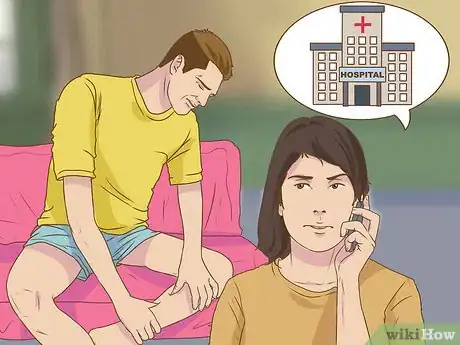



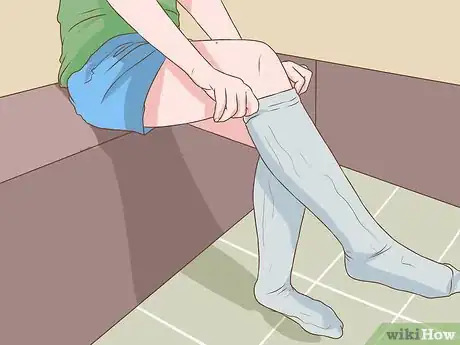
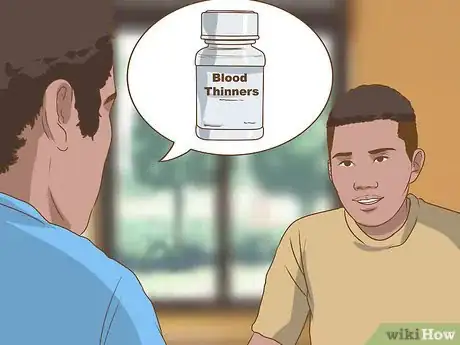
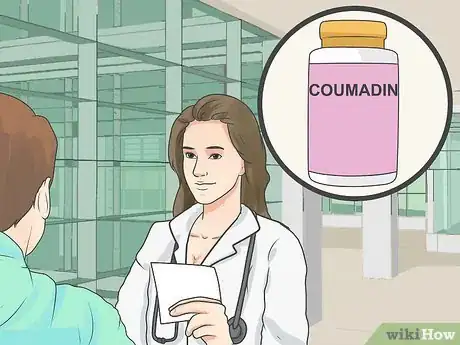


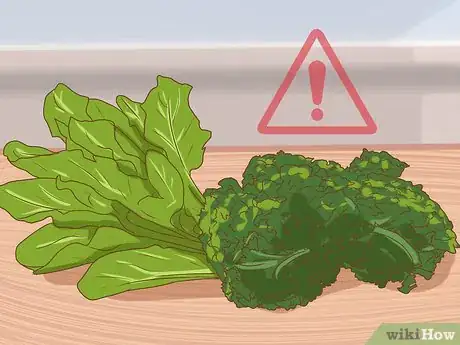





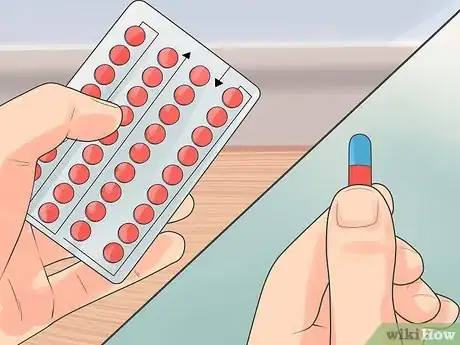






-Step-13.webp)


-Step-16.webp)
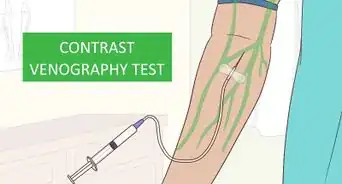















































Medical Disclaimer
The content of this article is not intended to be a substitute for professional medical advice, examination, diagnosis, or treatment. You should always contact your doctor or other qualified healthcare professional before starting, changing, or stopping any kind of health treatment.
Read More...